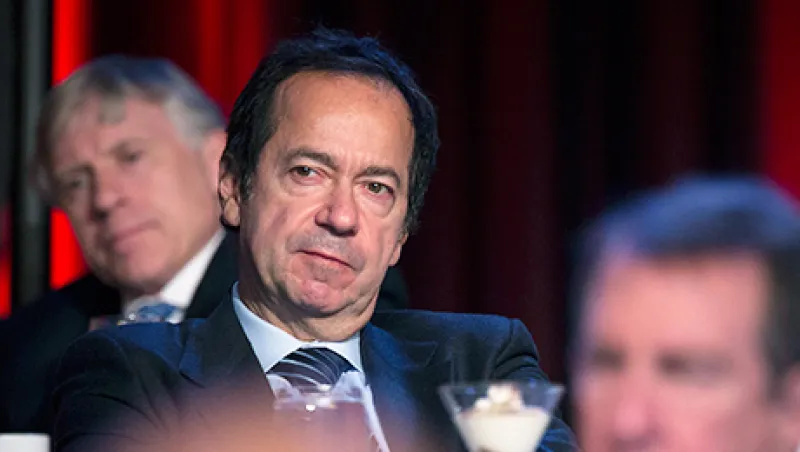John Paulson, the hedge fund manager who skyrocketed to fame when his big bet against the subprime mortgage market personally netted him $3.7 billion in 2007, is now managing just $10 billion, down 40 percent from a year ago and a far cry from his peak of $36 billion. But rather than convert his firm into a family office — as some of his peers have done — he’s trying to rebuild his firm, Paulson & Company, in part with a spate of fund launches.
Paulson, who also scored a $4.9 billion payday in 2010 from betting heavily on the surging price of gold, has paid a steep price in recent years for his outsize bets on drug companies. Now, sources say, he is quietly banking on regaining his former stature and regrowing Paulson & Co. To that end, the firm has launched three new funds in just the past 1.5 years or so. A spokesman for Paulson & Co. declined to comment.
Paulson last year launched the Paulson Pure Spread Fund. This fund draws on the manager’s long-term strength of playing merger arbitrage, which traditionally calls for going long the targets of announced deals and simultaneously shorting the would-be acquirers as a hedge. The idea is that you make money as you get closer to the deal closing at the agreed-upon price.
The strategy, made popular during merger mania in the 1980s, has never been a huge moneymaker but has been treated as a less risky, more predictable strategy. And since many deals close within months of their announcement, arbitrageurs traditionally calculate their gains based on the annualized return.
At the 2013 Delivering Alpha Conference, co-sponsored by Institutional Investor and CNBC, Paulson admitted he had grown frustrated by this strategy. He lamented that spreads between announced deal prices and the prevailing prices had narrowed to the 5 to 7 percent range, compared with earlier times. “It is hard to make money from the spreads,” he said at the time.
So, he told attendees, he was deploying two different strategies. First, he was anticipating which announced deals will get a higher competitive bid before jumping into the stock of the target company. Second, Paulson said he would speculatively anticipate bids for companies in what he described as consolidating industries. In the heyday of merger mania, this strategy was also called “rumor arbitrage.”
In any case, the new fund’s more traditional approach produced a small gain last year, better than what most of his funds could boast.
In 2016, Paulson also launched Paulson Strategic Partners Fund. It is a longer lock-up, private equity-style vehicle designed to invest in debt and distressed securities in the U.S. and Europe. It won’t charge fees on the assets until it calls committed capital when it has a deal to invest in. The firm was hoping to raise about $1.5 billion for the fund. According to a source, the fund has so far made one investment, last year.
In 2016, the firm’s existing, more liquid credit fund, Paulson Credit Opportunities, gained 12 percent. In the first quarter of this year it was flat. (Its other big funds didn’t fare nearly as well: Paulson Advantage lost 14 percent, Paulson Partners fell by 25 percent and Paulson Special Situations declined by 30 percent.)
In late 2015 he trotted out the Paulson Long/Short Master Fund. Last year it declined by around 2 percent, which was much better than most of the firm’s other funds. It gained 7 percent in the first quarter of this year.







